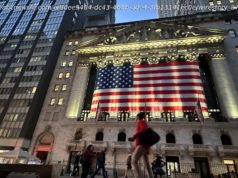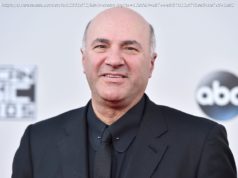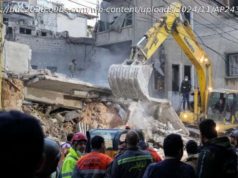The golden age of American politics was illiberal, undemocratic, and bloody.
A university recently invited me to participate in a forum considering this question: Has American politics ever been this bad? The answer, clearly, is that it has been much worse. We had a Civil War, after all. Congress worked out proposals to eradicate and subjugate Native American tribes. We interned families of Japanese descent. We pitched into the Iraq War based on lies. But the fact that the university was posing the question, and seriously, speaks to the anxiety of this age.
Every morning feels like a fresh emergency. We wake to hear the president of the United States rage that the election was rigged, that a “deep state” is plotting against him, that the press has too much freedom, that he intends to jail his political enemies and sue those who might embarrass him and fire those who don’t protect him.
The distance between the indicators of American prosperity and the unease that permeates American politics is vast. Despite 3.9 percent unemployment, a booming stock market, and relative peace abroad, only 38 percent of people say the country is on the “right track.” A Washington Post/University of Maryland poll found that 71 percent of Americans believe our “problems have reached a dangerous new low.”
Bookstores are filling with dire warnings about the future of our system. There’s Steven Levitsky and Daniel Ziblatt’s How Democracies Die, Amy Chua’s Political Tribes: Group Instinct and the Fate of Nations, and Yascha Mounk’s The People vs. Democracy: Why Our Freedom I s in Danger and How to Save It, to name a few of the best explorations of the topic. And there are anxious analyses of Trump’s undemocratic rhetoric and impulses from people like, well, me.
“The United States of America is in a better place today than we have almost ever been in the history of our country,” says Mitch Landrieu, the Democratic mayor of New Orleans. “We’re economically stronger than anybody in the world; we’re militarily stronger. The job creation over the last 80 months has been pretty spectacular. We’re not in the worst place that we’ve been historically. So why are we feeling so agitated with each other?”
The frameworks offered by the political scientists are dire. In The People vs. Democracy, Mounk argues that liberal democracy — “the unique mix of individual rights and popular rule that has long characterized most governments in North America and Western Europe” — is decomposing into warped incarnations of its constituent elements: illiberal democracy and undemocratic liberalism. “The question now is whether this populist moment will turn into a populist age — and cast the very survival of liberal democracy in doubt,” he writes.
In How Democracies Die, Levitsky and Ziblatt argue that “two basic norms have preserved America’s checks and balances in ways we have come to take for granted: mutual toleration, or the understanding that competing parties accept one another as legitimate rivals, and forbearance, or the idea that politicians should exercise restraint in deploying their institutional prerogatives.” Those norms, they say, are rapidly eroding, and America’s democratic future hangs in the balance.
Immersing myself in the growing literature of American decline has been a disorienting experience. These are persuasive, thoughtful analyses that match the anxiety I feel. Donald Trump’s illiberal impulses are real, and the way much of the electorate and most of the elected Republican Party has chosen to accept them chills me.
But reading these books raised a question for me: is this really a uniquely alarming moment in American life? Is the future of liberal democracy so much less sure today than it has been in our recent past? The more I looked for answers to that question, the less certain I became.
The triumphant story we tell about American history can obscure both the extent of our progress and the fragility of our consensus. To see what we are, or what we may become, requires clarity about what we have been. And what we have been is violent, disordered, undemocratic, and illiberal on a scale far beyond anything the United States is undergoing today.
You do not need to go back to the country’s early years — when new arrivals from Europe drove out the Native Americans, brought over millions of enslaved Africans, and wrote laws making women second-class citizens — to see it.
Just a few decades ago, political assassinations were routine. In 1963, President John F. Kennedy was murdered on the streets of Dallas. In 1965, Malcolm X was shot to death in a crowded New York City ballroom. In 1968, Martin Luther King Jr. was killed, as was Robert F. Kennedy. In 1975, Lynette “Squeaky” Fromme, standing about arm’s length from President Gerald Ford, aimed her gun and fired; the bullet failed to discharge. Harvey Milk, the pioneering gay San Francisco city supervisor, was killed in 1978. President Ronald Reagan was shot in 1981; the bullet shattered a rib and punctured a lung.
For much of the 20th century, the right to vote was, for African Americans, no right at all. Lynchings were common. Freedom Riders were brutally beaten across the American South. National Guard members fired on, and killed, student protesters at Kent State. Police had to escort young African-American children into schools as jeering crowds shouted racial epithets and threatened to attack.
Violence broke out at the 1968 Democratic National Convention. Urban riots ripped across the country. Crime was rising. The US launched an illegal, secret bombing campaign in Cambodia. Richard Nixon rode a backlash to the civil rights movement into the White House, launched an espionage campaign against his political opponents, provoked a constitutional crisis, and became the first American president driven from office by impeachment proceedings.
Ian Haney López, director of the Racial Politics Project at the University of California Berkeley’s Haas Institute, calls the 20th-century United States “a herrenvolk liberal democracy” — a democracy for the majority ethnic group but something very different for the rest of society. “That herrenvolk liberal democracy solved major problems for whites,” says Haney López. “It solved the problem of national identity. It solved the problem of how to ensure wealth in society was continuously pushed downward and outward, so prosperity was shared and broad. For whites, democracy was working very well.”
In his book Paths Out of Dixie, Robert Mickey argues convincingly that much of the American South was under authoritarian rule until the mid-20th century. It was only “with the abolition of the whites-only Democratic primary in 1944 and continuing up through the national party reforms of the early 1970s” that the South — and thus America — actually democratized.
This is not a counterintuitive take on American history, by the way. Among experts, it is closer to the consensus. The Varieties of Democracy project, which has been surveying experts on the state of global democracies since 1900, gave the US political system a 48 on a 1-100 scale in 1945 and a 59 in 1965. It was only after the civil rights movement that America began scoring in the 70s and 80s, marking it as a largely successful democracy.
The era that we often hold up as the golden age of American democracy was far less democratic, far less liberal, far less decent, than today. Trump’s most intemperate outbursts, his most indecent musings, pale before opinions that were mainstream in living memory. And the institutions of American politics today are a vast improvement on the regimes that ruled well within living memory.
Our checkered past is not ignored in the more recent literature on democratic decline, and I don’t mean to suggest otherwise. Indeed, both How Democracies Die and The People vs. Democracy include excellent, insightful discussions of this history. But I don’t think the brutality of our past is taken sufficiently seriously in informing the analysis of our present.
Levitsky and Ziblatt, for instance, write that, “The norms sustaining our political system rested, to a considerable degree, on racial exclusion.” It’s an unsettling analysis that raises the question of how long, exactly, America has actually been a democracy.
Much punditry about this era — including my own — has been even more ahistorical. In the story we tell of America, this violence and tumult and repression is absorbed into a tale of progress — a country gaining in power and prosperity, inching ever closer to the fulfillment of our founding ideals.
“America is aspirational,” says Carol Anderson, the author of White Rage: The Unspoken Truth of Our Nation’s Divide and a professor of African-American studies at Emory University. “That is part of what sets it apart. Marginalized people have used those aspirations to say, ‘This is what you say you are, but this is what you do.’ But what also happens is those aspirations get encoded as achievements. You get this longing for a mythical past.”
Believing in a mythical past makes it hard to assess a grim present. The head-snapping transition from Barack Obama’s presidency to Donald Trump’s can seem like a betrayal of the American story, evidence that something has gone radically and unexpectedly awry. Much of today’s conversation presents American politics as falling from a state of liberal democratic grace.
In my reporting, Trump’s presidency has been less surprising, and often less alarming, to those with a more realistic view of America’s racial past. There is a strange comfort in recognizing that for all Trump’s illiberal antics, it was the very architecture of American politics, not just the president, that was deeply illiberal and undemocratic in living memory.
“This idea that we have achieved liberal democracy and Trump is taking us back from this achievement is inaccurate,” says Sarah Song, a UC Berkeley political theorist who focuses on issues of American citizenship. “Illiberal strands have been with us all along, and Trump is able to tap into those.”
A fair question, however, is whether the tumult of our past has much bearing on the threats of our present. As Mounk told me when I posed some of these questions to him, “I don’t know how helpful it is to say to a 70-year-old guy, ‘When you were 35, you had a heart attack; it was touch-and-go there, but you got through it. Now you have cancer, but you’ll get through it.’ The answer to that is that was a different disease at a different point.”
But what if it wasn’t a different disease?
In White Rage, Carol Anderson reflects on the protests in Ferguson, Missouri, and the way the nation has always been transfixed by black rage, by images of “rampaging, burning, and looting.” But not all rage is so visually arresting. “White rage is not about visible violence,” she writes, “but rather it works its way through the courts, the legislatures, and a range of government bureaucracies. It wreaks havoc subtly, almost imperceptibly. Too imperceptibly, certainly, for a nation consistently drawn to the spectacular — to what it can see.”
This point — that we see some deviations from a peaceful, liberal, democratic system more clearly than others — is useful for thinking about both our past and our present.






